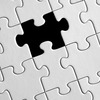Introduction
In this article we look at why you should consider using a dedicated tool for performing your RCM analysis. There are many overlooked features of dedicated tools that can significantly improve the quality of your analysis and save you time, such as security, access, visibility and data storage. Here we use ReliaSoft RCM++ as an example.
RCM is a big commitment
Reliability Centred Maintenance (RCM) is a big investment, which is worth remembering when planning a study. Anything that can help keep the costs down and maximise the payback is worth considering. One thing that can have a big impact on an RCM programme, is a dedicated database driven software tool. Below, I will highlight some of the key ways in which a database RCM tool can help you.
Store everything in one place
RCM studies generate a lot of information – each asset has many functions, failures and causes. Keeping these records organised and up to date is difficult when they are stored in separate files – especially if those files are stored in a number of locations. Keeping the analysis in a database makes it clear where analysis is stored and allows changes to be tracked.

Each project can also be used to store other reliability work – such as fault trees – to further improve visibility. Being a database, it is also possible to store copies of the study at key points in time, for example when moving from concept to detailed design, that can be recalled at a later date if needed without cluttering up the workspace and preventing people accessing out of date versions.
Make the system definition clear
Being able to see what makes up the system is essential for the RCM study, as not only is it important to see what is in scope, but to also see what is covered elsewhere. Clearly defining the system shows the team what they are working on and how things link together. Using a tree structure is a great way to do this, as it shows the parent-child relationships between different items.

Keep more than just RCM records
A database can keep the relationship between many things, so in addition to RCM records, it is possible to keep supporting analyses and diagrams. These analyses can be tied to the item under consideration and add that extra level of investigation to an asset.

Use templates for consistent work
A consistent approach to RCM leads to a higher quality analysis that is easier to sort, read and reuse. There are many sources for variation, which only increases with the number of people involved. One of the simplest ways to align a team’s work is to enforce a common template for the analysis.

It is very tempting during a workshop to modify the template being used – adding or removing columns, perhaps rewording the rating scales to better fit the item being studied – but although this can improve a subset of the study, it is more likely to compromise the work as a whole. If changes to the template will benefit the study as whole, then these changes should be effected everywhere, which is difficult to do when working with separate files.
Control access with permissions
There are many levels of security available with a database, preventing people accessing individual elements or entire sections, as well as recording who has made changes. Adding security can also prevent user error, such as by preventing people from accidently modifying templates when trying to hide a column or adding duplicates of tasks that have already been defined.

Generate reports that make sense
It is often the case that different people want to see different information. Using a database driven tool allows the use of data collection and reporting. Custom reports can be set up that contain only the information that is needed, which could vary from one stakeholder to the next.

Having this functionality allows teams to capture comments and other information alongside their work, without fear of creating a cluttered document.
Keep a history
A database can timestamp records, capturing when records were created and last updated, which is incredibly helpful when auditing work. Sometimes though, this isn’t enough, such as when a record is deleted there is nothing left to attach a timestamp to. This is where a feature such as a history log becomes useful. The history log is great tool for demonstrating continuous improvement, as well as serving as a record of lessons learned for any projects in the future.

Summary
We have covered some of the main benefits of using a dedicated RCM tool, specifically a database driven tool. Using a tool like this not only enhances quality but also saves time and effort, by enforcing consistency, reusing information, restricting access whilst giving enhanced visibility of your analysis. Here we have shown screenshots from ReliaSofts industry leading RCM tool; RCM++.





